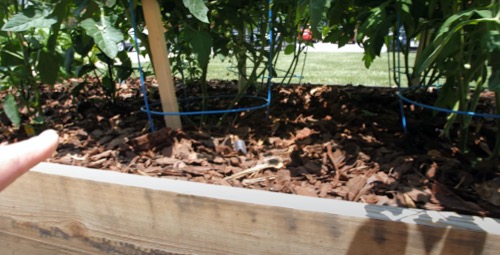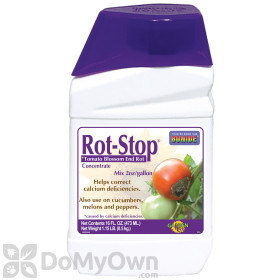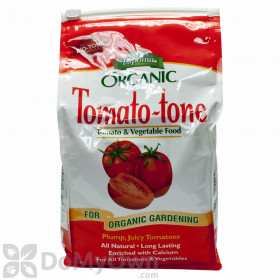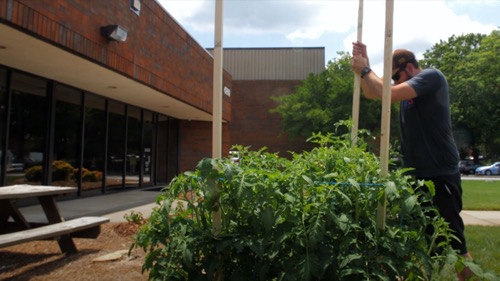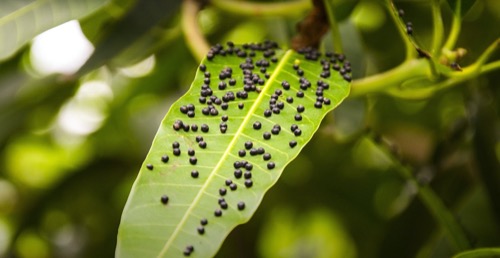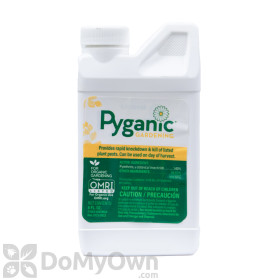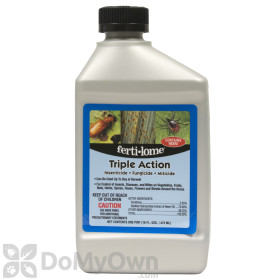Keeping Your Tomatoes Growing Strong
Create a Fertilization Routine for Your Vegetable Garden
While many vegetables will sprout and thrive on their own, there are things we can do as gardeners to help them produce even more successfully. One key tool that a gardener has available is the use of natural and organic fertilizers.
Test the soil in your garden to find out what nutrients it may be lacking and consult your local Extension Office for recommendations on the type of fertilizer and the frequency at which it should be applied to help your vegetable garden grow at its best.
This soil report can also tell you the pH level of your garden bed soil. Low or high pH levels can be corrected with soil amendments such as lime, but plan ahead--you should make these amendments 3-6 months before you begin planting in your garden.
A common plan is to fertilize near each tomato plant (also called 'side dressing') once every 3-4 weeks with a 10-10-10 mixture fertilizer and soak that product into the garden bed. Using a balanced fertilizer of this type can help you avoid putting too much nitrogen in your soil. That is a concern because nitrogen-rich soil can result in more blossoms, but fewer tomatoes. Keep an eye on those soil levels!
When you water upright plants like a tomato vine, it is best to use a watering can to apply the water directly to the plant base. This helps you avoid heavily wetting the leaves of the plant, which can be an invitation for plant disease.
Once plants have grown for a while and progress can be noted, you will be able to spot tomato plants that don't look as healthy or strong as others. Try applying a direct foliar spray fertilizer of the same type to these plants twice a week and note any improvement that occurs.
Again, you should consult your local extension office and the results of a home soil test to confirm the type of fertilizer that best suits your garden. We have some recommendations that could be the right product for you listed below.
Products needed for Step 1
Tips for Securing Your DIY Tomato Plant Patch
Consider the cage height you may need to help your tomatoes grow upright, staying off the ground. By encouraging upward growth, you'll have fewer tomatoes sitting on the ground where spoilage is more likely. Standard store-bought tomato cages are a great choice for most gardens. It will be helpful to know whether you're planting determinate (growing only to a certain height or length) or indeterminate type plants that will grow until stopped by freezing weather.
Both types of tomato plants can outgrow a standard cage before long and require further support. The classic solution is the use of tall wooden stakes driven into the soil near the base of each tomato plant. Contact your local extension office for specific stake height recommendations based on the type of tomato vines you're planting.
Loosely tie up drooping branches of the tomato vine that appear to be producing fruit or have the capacity to do so. With a loose knot of twine, tucking the fruit-bearing limbs into the support structure offers protection against wind and other environmental threats that may damage the plant and cause fruit loss.
Draping a plastic net over the entire garden structure is a tried-and-true method for keeping away hungry birds who may want a taste of your tomatoes before they are ready for harvest. Make sure you have something to hold the net off the plants from above. Your tomato stakes could do a great job of this. Weight the edges of the net around the garden with rocks or smaller stakes, making sure to allow yourself access to the garden for tending, maintenance, and harvesting.
Prepare for the Possibility of Pests in Your Garden
Throughout the life of your tomato plants, it is important to keep an eye out for pests in your garden. Watch leaves and fruit as you maintain your plot and consider your options if you see evidence of insect pests in the area.
An all-natural approach to pest defense in the garden is to introduce beneficial insects in the area, such as lacewings or ladybugs. These natural predators of smaller sucking insects such as aphids or mites can offer your garden an extra layer of defense in addition to any chemical treatment you may choose to apply. Additional natural protection against insect pests can be gained by adding a layer of mulch over the soil around your tomato plants.
Be mindful of any uninvited guests you see on or around your tomato plants as you work in the garden. Spotting a common tomato pest early could make a huge difference in whether your fruits make it to harvest. Here are some of the most common and destructive tomato pests to watch out for.
- Hornworms - These destructive caterpillars measure 3 to 3.5 inches long and are light green in color, making them hard to spot against a tomato plant stem or leaf. The V-shaped yellow-white markings on their sides can help you identify them. Horn worms can be sprayed off with water or picked off by hand, but where there's one, there are likely many more. Consider using an insecticide like Southern AG Thuricide BT for caterpillar control.
- Fruit Worms - Fruit worm larvae are green caterpillars that grow into green- or olive-colored moths as adults. Despite their name, the fruit worm will feed on the leaves of a plant before taking on the fruit. This can give you an opportunity to spot the caterpillars before they reach their full potential.
- Potato Aphids - Tiny sucking insects that are dark in color and round in shape, potato aphids don't usually cause enough damage to kill a tomato plant, but they are still a threat. If your garden is infested with potato aphids, they can cause mold problems that result in stunted growth of your tomato plants. Remove the pests by hand or by pruning infested plant matter, and be sure to dispose of any part of the infestation in a sealable trash can to avoid re-infestation.
- Beet Armyworms - These caterpillars tend to lay their eggs underneath leaves and will transition into gray-colored moths in adulthood. If you spot any armyworm activity in your garden, the worms can be picked off by hand and destroyed to eliminate the chance of future plant damage.
We have some recommended products for treating edible plants listed below. If you have questions about which is best for your tomato garden, give us a call or chat today.
Products needed for Step 3
Pick Your Tomatoes in a Timely Manner To Avoid Fruit Loss
When your tomatoes start to show some color--usually red!--they're ready to be harvested and you should pick them to avoid losing any fruit to hungry birds or to spoilage. Check out our Harvesting video for lots of great DIY tomato picking tips, and enjoy the fruits of your labor!





